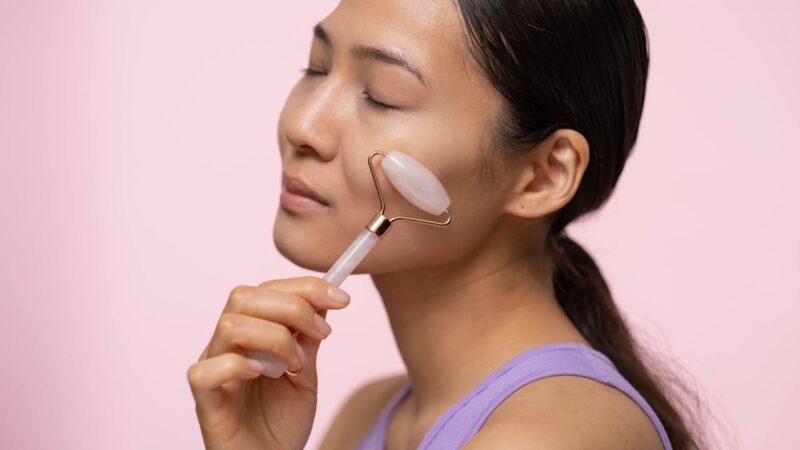Should You Strap on a Weighted Vest for Your Daily Stroll

Walking is often touted as a great way to stay active and healthy. It’s free, it has many health benefits, and it allows you to enjoy the outdoors. But for some, walking might not feel intense enough for a satisfying workout. That’s where weighted vests come in. These vests, worn during walks, can help increase intensity and provide additional benefits. But is wearing a weighted vest right for you? Let’s take a closer look.
Benefits of a Weighted Vest
Dr. Vivek Babaria, a sports medicine specialist, explains that wearing a weighted vest during walks can boost the intensity of your exercise, helping you burn more calories and improve cardiovascular health. Additionally, the added resistance from the vest can help build muscle strength and endurance, especially in the lower body and core. It can also promote better bone density, which is essential for overall bone health.
Choosing the Right Vest
Weighted vests come in various weights, so it’s crucial to pick one that suits your fitness level and body type to avoid injury. Rob Rowland, a physical therapist, recommends starting with a vest that represents 5-10% of your body weight. Make sure the vest fits snugly but doesn’t restrict breathing or movement. Opt for vests with adjustable straps to customize the fit and ensure even weight distribution.
Alternatives to Weighted Vests
If you don’t have a weighted vest, you can use a backpack as an alternative. Ensure the backpack fits properly and sits high on your back to avoid strain. However, be cautious not to carry too heavy a load, as it can lead to poor posture, soreness, and injury.
Potential Downsides
Using a weighted vest or backpack improperly or progressing too quickly can lead to injury. If you experience prolonged soreness or discomfort, consider adjusting the weight or seeking medical advice. Additionally, be mindful of environmental factors, such as hot and humid weather, which can increase exertion and pose challenges to cooling down.
Verdict
While weighted vests can enhance your walking routine, it’s essential to use them safely and appropriately. Start with lighter weights and gradually increase resistance as your fitness improves. Listen to your body, and if you experience any discomfort, make adjustments accordingly. With proper care and consideration, incorporating a weighted vest into your daily walks can provide an effective way to boost intensity and reap additional health benefits.
Q&A
Q: What are the benefits of wearing a weighted vest during walks?
A: Wearing a weighted vest during walks can increase the intensity of your exercise, helping you burn more calories and improve cardiovascular health. It can also build muscle strength and endurance, particularly in the lower body and core, and promote better bone density.
Also Read: Summer Eye Care: Protecting Your Vision in the Heat
Q: How heavy should a weighted vest be for walking?
A: The weight of the vest should be chosen based on your fitness level and body type. Generally, starting with a vest that represents 5-10% of your body weight is recommended. It’s essential to pick a weight that challenges you but doesn’t cause discomfort or strain.
Q: Can I use a backpack instead of a weighted vest for walking?
A: Yes, a backpack can be used as an alternative to a weighted vest. Make sure the backpack fits properly and sits high on your back to avoid strain. However, be cautious not to carry too heavy a load, as it can lead to poor posture and potential injury.
Q: Are there any downsides to wearing a weighted vest during walks?
A: Improper use of a weighted vest, such as carrying too heavy a load or wearing the vest incorrectly, can lead to poor posture, soreness, and injury. It’s essential to start with lighter weights and progress gradually to avoid strain. Additionally, be mindful of environmental factors, such as hot weather, which can increase exertion and pose challenges to cooling down.
Q: How can I ensure proper fit and comfort when wearing a weighted vest?
A: When wearing a weighted vest, it should fit snugly but not restrict breathing or movement. Look for vests with adjustable straps to customize the fit and ensure even weight distribution. Padded vests can also help prevent chafing during long walks.
Q: What are some exercises I can do with a weighted vest besides walking?
A: Weighted vests can be used for a variety of exercises besides walking, including bodyweight exercises like squats, lunges, push-ups, and pull-ups. You can also incorporate the vest into cardio exercises like jogging, hiking, or stair climbing for added resistance.
Q: How can I gradually increase the weight of my weighted vest?
A: If your weighted vest has adjustable weights, you can gradually increase the weight by adding more weight plates or adjusting the existing ones. Start with lighter weights and gradually increase resistance as your fitness level improves. Alternatively, some vests come with pockets where you can add additional weights as needed.
Q: Are there any specific safety precautions I should take when using a weighted vest?
A: It’s essential to listen to your body and avoid overexertion when using a weighted vest. Start with lighter weights and progress gradually to avoid strain or injury. If you experience prolonged soreness or discomfort, consider adjusting the weight or seeking guidance from a fitness professional. Additionally, consult with a medical provider if you have any underlying health conditions or concerns.
Q: Can children or older adults use weighted vests for walking?
A: While weighted vests can be beneficial for adults, they may not be suitable for children or older adults, especially those with preexisting health conditions. It’s essential to consult with a healthcare professional before incorporating weighted vests into exercise routines for these populations to ensure safety and appropriateness.
Also Read: Are Natural Mosquito Repellents Safe and Effective Alternatives
Q: Are there specific benefits of using a weighted vest for older adults?
A: For older adults, using a weighted vest can help improve bone density and muscle strength, which are crucial for maintaining mobility and reducing the risk of falls. However, it’s essential to start with lighter weights and progress gradually to avoid strain or injury, and to consult with a healthcare professional before beginning any new exercise regimen.











